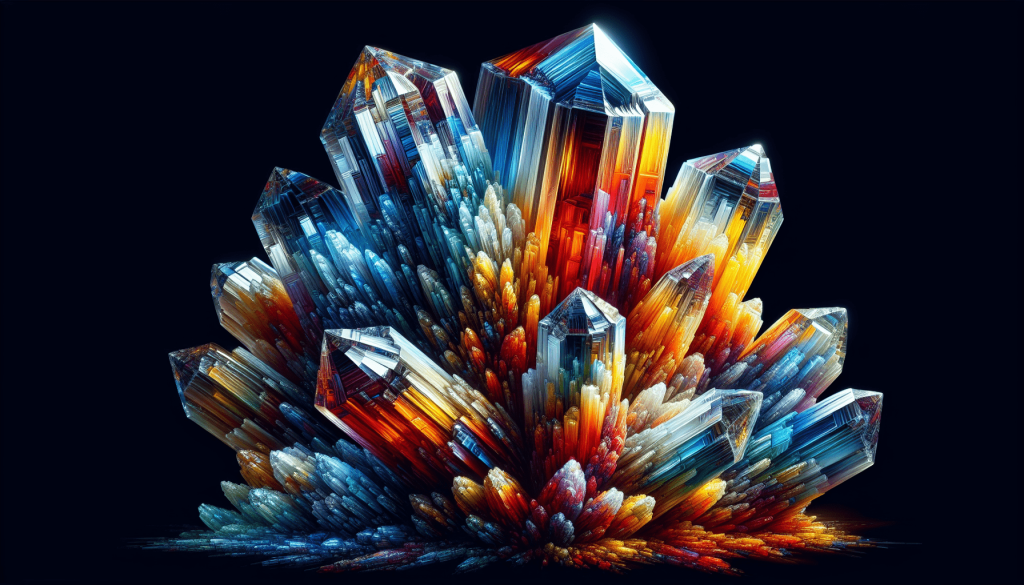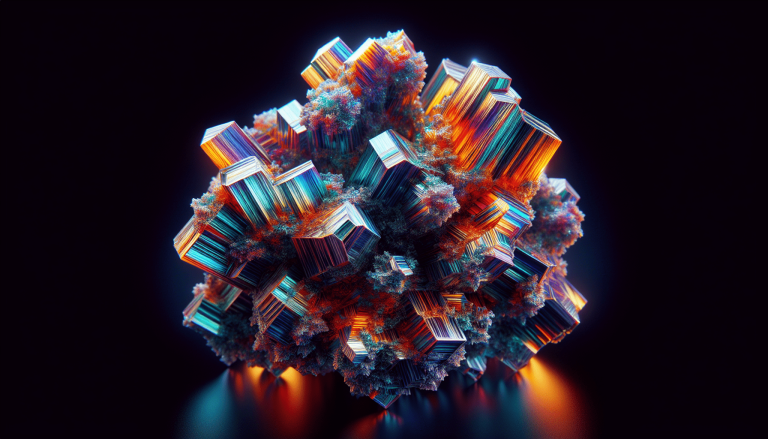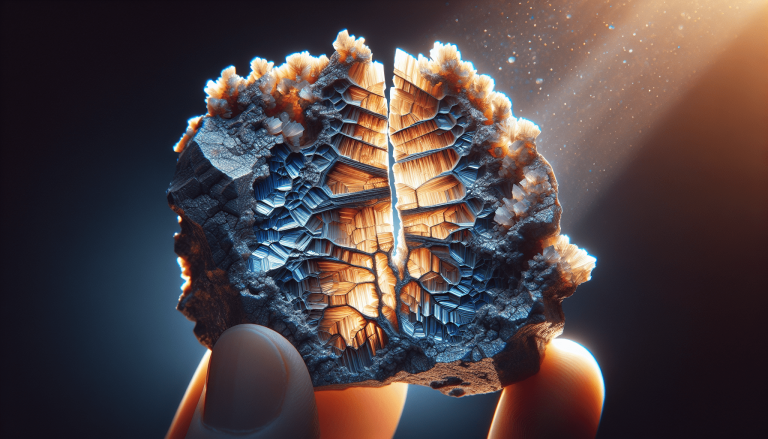Most Popular Mineral Chemical Properties To Know
So you’re interested in minerals and their chemical properties, huh? Well, you’ve come to the right place! In this article, we’ll be diving into some of the most popular mineral chemical properties that you absolutely need to know. From hardness and luster to crystal systems and cleavage, we’ll cover it all. Get ready to embark on a fascinating journey through the world of minerals and discover why their chemical properties are so important and intriguing. Let’s get started, shall we?

Hardness
Mohs Hardness Scale
When it comes to mineral properties, hardness is an important characteristic to consider. Often described as a mineral’s resistance to scratching, hardness can vary significantly from one mineral to another. To measure and compare the hardness of different minerals, the Mohs hardness scale was developed by Friedrich Mohs in 1812. This scale consists of ten minerals, each with a different hardness level, ranging from 1 (softest) to 10 (hardest). By testing a mineral’s resistance to scratching using these reference minerals, you can determine its relative hardness.
Determining Hardness
To determine the hardness of a mineral, you can perform a simple scratch test. Start by finding a mineral with a known hardness from the Mohs scale, such as talc, which has a hardness of 1. Then, try to scratch the mineral you want to test with the talc. If the mineral is scratched, it has a hardness less than 1, indicating that it is softer than talc. On the other hand, if the mineral cannot be scratched or only scratched by a mineral with a higher hardness, you can conclude that it has a hardness greater than 1. Repeat this process using other minerals from the Mohs scale until you find one that scratches the mineral you’re testing or one that the mineral scratches. By doing so, you can narrow down the hardness range of the mineral in question.
Cleavage and Fracture
Definition of Cleavage and Fracture
Cleavage and fracture are terms used to describe how minerals break. Cleavage refers to the tendency of a mineral to break along planes of weakness, producing smooth, flat surfaces. In contrast, fracture describes the way a mineral breaks when it lacks cleavage. Fracture surfaces are typically uneven or irregular.
Types of Cleavage
There are different types of cleavage, which depend on the number and orientation of the planes along which a mineral can split. The most common types of cleavage include basal, cubic, octahedral, prismatic, and rhombohedral. Basal cleavage occurs when a mineral breaks along parallel planes to its base. In cubic cleavage, a mineral breaks along three mutually perpendicular planes, creating cubic-shaped fragments. Octahedral cleavage involves breakage along four planes that intersect at right angles, resulting in octahedral-shaped pieces. Prismatic cleavage occurs when the mineral breaks along vertical planes, forming elongated, prismatic-shaped fragments. Lastly, rhombohedral cleavage leads to breakage along three intersecting planes, producing rhombohedral-shaped fragments.
Types of Fracture
Unlike cleavage, fracture does not result in smooth, flat surfaces. Instead, it creates irregular, rough, or jagged surfaces. There are several types of fracture, including conchoidal, uneven, fibrous, hackly, and splintery. Conchoidal fracture produces smooth, curved surfaces resembling the inside of a seashell. Uneven fracture leads to irregular breakage surfaces without any specific patterns or planes. Fibrous fracture causes minerals to break into thin, hair-like fibers. Hackly fracture results in jagged, sharp-edged surfaces. Lastly, splintery fracture leads to the formation of long, splinter-like fragments.
Luster
Metallic Luster
Luster refers to the appearance or quality of light reflected from the surface of a mineral. Metallic luster is observed when a mineral reflects light as if it were made of metal. Minerals with metallic luster have a shiny, reflective surface that resembles polished metal. Examples of minerals with metallic luster include gold, silver, copper, and iron. When these minerals are fresh and unoxidized, their metallic luster is particularly pronounced.
Non-metallic Luster
In contrast to metallic luster, non-metallic luster describes the appearance of minerals that do not have a metallic shine. Non-metallic luster can have various characteristics, such as vitreous (glass-like), pearly, silky, greasy, or earthy. Vitreous luster is the most common and is often observed in minerals like quartz and feldspar, which have a glassy appearance. Pearly luster is reminiscent of the shine seen on the surface of pearls and is commonly found in minerals like talc and gypsum. Silky luster refers to a fibrous or thread-like appearance, similar to silk strands, which is seen in minerals like asbestos. Greasy luster describes minerals that appear to be covered in oil or grease, while earthy luster gives minerals a dull, dull texture that resembles freshly-turned soil.
Color
Intrinsic and Extrinsic Color
Color is a visually striking and easily noticeable characteristic of minerals. It arises from the selective absorption and reflection of light by the mineral’s atomic structure. Intrinsic color refers to the natural color of the mineral itself, resulting from its chemical composition and crystalline structure. For example, pure sulfur is yellow, while copper minerals often display shades of blue and green. Extrinsic color, on the other hand, is the color that a mineral appears to be due to impurities or external factors. For instance, quartz can occur in a variety of colors, including clear, pink, purple, or smoky, depending on the presence of impurities like iron or manganese.
Causes of Color in Minerals
Various factors can contribute to the coloration of minerals. One significant cause is the presence of transition metal ions within the mineral’s structure. These ions absorb certain wavelengths of light, resulting in the observed color. For example, the presence of copper ions gives minerals a blue or green hue, while iron impurities often produce yellow, red, or brown colors. Other factors that can influence color include the presence of organic compounds, such as carbon or complex molecular structures, as well as the interaction of light with the mineral’s surface, leading to phenomena like iridescence or fluorescence.

Streak
Definition of Streak
Streak refers to the color of a powdered form of a mineral. To determine the streak color, you need to rub the mineral against an unglazed porcelain plate, known as a streak plate. By doing so, you leave a trail of powdered mineral behind, which can then be observed and identified by its color. Streak color is often more reliable than the overall color of a mineral when it comes to identification, as it is less likely to be affected by impurities or external factors.
Streak Color vs Mineral Color
The color observed in a mineral’s streak is sometimes different from its apparent color. This can occur due to impurities present within the mineral or the influence of external factors, such as oxidation. For example, hematite, a mineral with a rust-red color, leaves a reddish-brown streak. Similarly, pyrite, also known as fool’s gold due to its metallic yellow appearance, leaves a black streak. By comparing the streak color to the mineral’s apparent color, you can gain valuable insights into its identification and distinguish it from similar-looking minerals.
Density
Definition of Density
Density refers to the compactness or heaviness of a mineral. It is defined as the mass of a substance per unit volume. In the context of minerals, density can vary significantly due to differences in composition, structure, and the presence of impurities. The density of a mineral is typically expressed in grams per cubic centimeter (g/cm³) or kilograms per cubic meter (kg/m³).
Calculating Density
To calculate the density of a mineral, you need to know its mass and volume. Mass can be determined using a balance or scale, while volume can be measured using various techniques, such as displacement or geometric calculations. Once you have these values, simply divide the mass by the volume to obtain the density. Another way to determine the density of a mineral is by using the specific gravity, which compares the density of the mineral to the density of water.
Significance of Density
Density plays a crucial role in mineral identification. Different minerals have distinct density ranges, allowing geologists and mineralogists to identify unknown minerals based on their density values. Additionally, density can also influence physical properties like hardness and cleavage. Minerals with higher density, for example, often exhibit greater hardness and are more likely to have cleavage planes. Understanding the density of a mineral can provide valuable insights into its composition, crystal structure, and formation processes.
Crystal Systems
Introduction to Crystal Systems
Minerals often have a repeating three-dimensional arrangement of atoms, known as a crystal lattice. Crystal systems categorize minerals based on the symmetry and characteristics of their crystal lattices. There are seven crystal systems: cubic, tetragonal, orthorhombic, monoclinic, triclinic, hexagonal, and trigonal. Each system has unique properties and crystallographic features that distinguish minerals falling within its category.
Common Crystal Systems
The cubic crystal system, also known as the isometric system, is characterized by a three-axis symmetry, with all axes perpendicular and of equal length. Minerals like pyrite and halite belong to this crystal system. The tetragonal system consists of three axes, with two being perpendicular and of equal length, while the third is longer or shorter. Minerals such as zircon and cassiterite exhibit a tetragonal crystal system. Orthorhombic crystals have three axes of unequal length, all being perpendicular to each other. Sulfur and topaz are examples of minerals that fall within the orthorhombic system. Monoclinic crystals have three unequal axes, of which only one is perpendicular to the other two. Gypsum and feldspar belong to this system. Triclinic crystals possess three unequal axes that are not perpendicular to each other. Examples of minerals within this system include plagioclase and microcline feldspar. Hexagonal and trigonal crystal systems share similar characteristics, with three equal axes lying in the same plane and forming angles of 60 degrees. Quartz and calcite are well-known minerals exhibiting hexagonal or trigonal crystal systems.
Taste
Taste in Minerals
Taste is an interesting property that can be used to identify certain minerals. However, it is important to exercise caution when using taste as a means of identification, as some minerals can be toxic or harmful when ingested. Only taste minerals that are known to be safe and non-toxic.
Identification through Taste
Several minerals exhibit distinctive tastes. For example, halite, commonly known as table salt, has a salty taste. Its taste is so well-known that it has become associated with the adjective “salty.” Other minerals include sylvite, which also has a salty taste, and alum, which is known for its astringent and puckering taste. While these minerals can be identified by their tastes, it is crucial to remember that taste alone is not a reliable method for mineral identification.
Magnetism
Magnetic and Non-magnetic Minerals
Magnetism is another property that can be helpful in mineral identification. Some minerals can be attracted to a magnet, exhibiting magnetic properties, while others are not magnetic. Magnetic minerals are often rich in iron, nickel, or cobalt, which are elements with strong magnetic properties.
Identification through Magnetism
To determine whether a mineral is magnetic, simply hold a magnet close to it and observe the interaction. If the mineral is attracted to the magnet or exhibits a noticeable magnetic force, it is considered magnetic. Common examples of magnetic minerals include magnetite and pyrrhotite. On the other hand, non-magnetic minerals like quartz and feldspar will not be affected by the magnetic field. Magnetism can be a useful tool in the identification process, especially when combined with other mineral properties.







